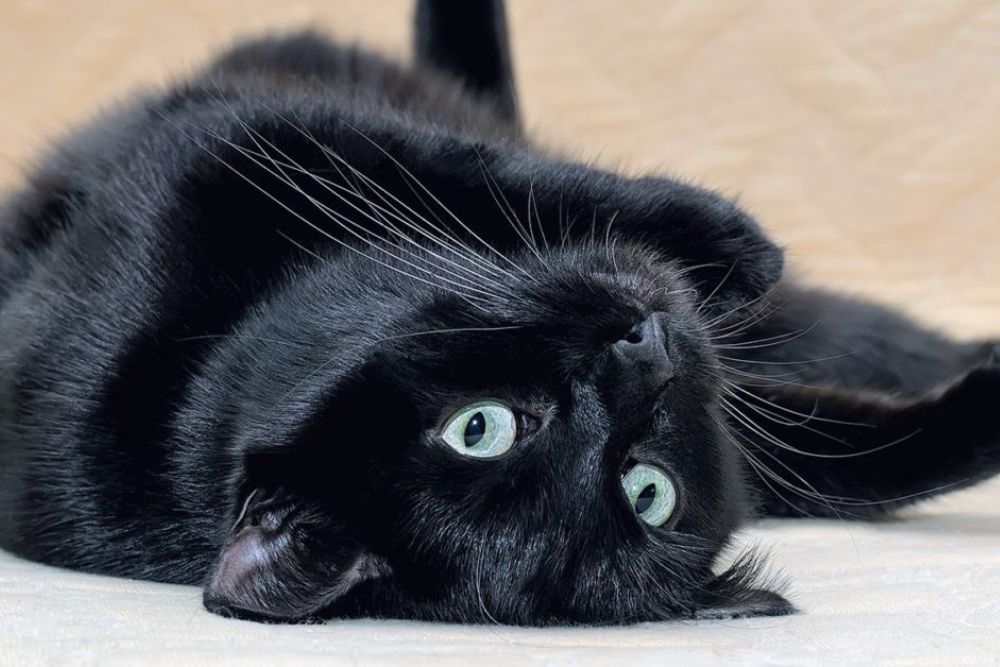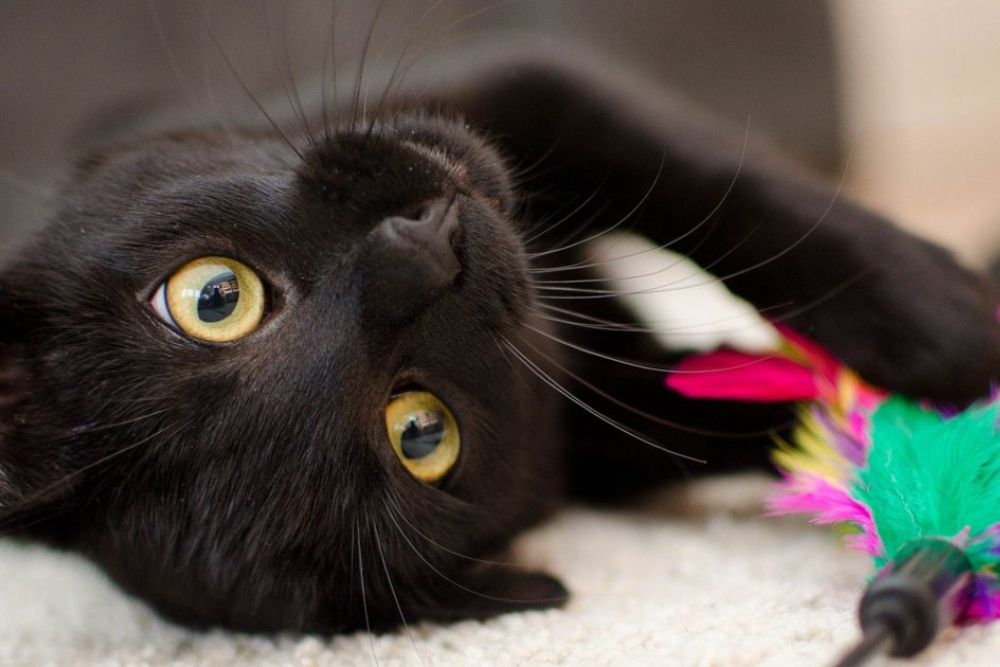Humans have been fascinated by and drawn to black cats for millennia. Because of how unique they look and how mysterious they seem, black cats have become a symbol of grace, charm, and good luck. Even though superstitions and myths surround these cats, they have won a special place in the hearts of many people. In this post, we’ll look at five reasons why people love black cats, as well as their cultural significance, distinctive traits, and widespread appeal.

Unique characteristics of black cats
Black cats differ from other cats in that they have a number of unique morphological and behavioral characteristics. For instance, compared to other cats, their fur is frequently more bright and lustrous, making them stand out in a crowd. Additionally, they frequently have golden or green eyes, which contrast beautifully with their dark fur. Black cats are renowned for having lively, devoted, and sharp personalities. Additionally, they are believed to be more autonomous and self-assured than other cats, which makes them wonderful pets for seasoned cat owners.
However, black cats have also endured a number of superstitions and urban legends that have connected them to misfortune, witches, and the paranormal. For instance, black cats are seen as witches in disguise in some cultures, and anyone who mistreat them will suffer bad luck. Due of this, many black cats have been victimized or abandoned, particularly around Halloween.
Reasons why people love black cats
Despite these unfavorable perceptions, many people have loved black cats throughout history for a variety of reasons. Some of the primary elements that add to their popularity are listed below:
Aesthetics and mystique
Unquestionably stunning animals, black cats exude a feeling of mystery and majesty. They stand out thanks to their distinctive dark fur and brilliant eyes, which give them a regal air that many people find alluring. In addition, the occult’s frequent association with black cats further adds to their attractiveness and intrigue.
Emotional and psychological benefits
It is well known that black cats make wonderful companions for people who struggle with mental disorders like anxiety or depression. Their owners receive support, comfort, and affection from them, and being around them can be relieving. Additionally, studies have demonstrated that having a pet can lower stress and enhance mental wellness.
Symbolic meanings and associations
Throughout history, black cats have been connected to a wide variety of symbols and meanings. Some cultures view them as protectors or luck-bringers, while others view them as signs of bad luck or witchcraft. Additionally, some people relate black cats to independence, mystique, and power, making them a well-liked literary and artistic emblem.

Societal and cultural trends
Black cats have long been associated with human culture and have appeared in literature, art, and the media. As a result, they have developed into an iconic symbol that stands for various things to various people. Their popularity has also grown as a result of social media, where numerous users post pictures and videos of their cherished black cats.
Practical considerations
Black cats are more likely to be abandoned or put to death because they are frequently overlooked in animal shelters. Because of this, many animal lovers decide to acquire black cats in order to prevent them from suffering this destiny. Black cats are an excellent choice for busy or inexperienced pet owners because they are low-maintenance animals that require minimal grooming and are generally healthy.
Black cats in popular culture
Black cats have appeared in a wide range of popular culture mediums, including books, movies, television, music, and visual arts. Among the most well-known instances are:
Literature
A black cat serves as the main character in Edgar Allan Poe’s classic tale of terror and suspense, “The Black Cat.” The “Picture of Dorian Gray” by Oscar Wilde and “The Master and Margarita” by Mikhail Bulgakov are two other well-known literary masterpieces with black cats.
Film and television
A black cat serves as the main character in Edgar Allan Poe’s classic tale of terror and suspense, “The Black Cat.” The “Picture of Dorian Gray” by Oscar Wilde and “The Master and Margarita” by Mikhail Bulgakov are two other well-known literary masterpieces with black cats.
Music
Numerous songs from various genres have made references to black cats, including “The Lovecats” by The Cure, “Black Cat” by Janet Jackson, and “Stray Cat Strut” by The Stray Cats.
Art
Numerous well-known pieces of art feature black cats, including Albrecht Dürer’s “The Large Piece of Turf” and Théophile Steinlen’s “Tournee du Chat Noir.” Additionally, they have appeared in more modern art styles like street art and graffiti.
Advocacy for black cats
Black cats continue to face discrimination and negative preconceptions despite their widespread appeal. Some people still hold onto the notion that they are cursed or connected to witchcraft, which can make it challenging for them to acquire housing. Black cats are also more prone than other cats to be abandoned or mistreated, which can result in health issues and a shorter lifetime.
Numerous animal shelters and rescue groups have started adoption drives and awareness campaigns targeted exclusively at black cats to address these problems. These initiatives seek to debunk common misconceptions about black cats and promote their adoption as devoted and devoted companions. In order to discourage this kind of conduct, some campaigners are also advocating for harsher penalties for those who hurt or abandon animals.
Conclusion
In conclusion, black cats have fascinated people for a very long time. These felines have earned a devoted following as a treasured representation of grace, mystery, and good fortune thanks to their distinctive look, character features, and cultural significance. Despite the unfavorable beliefs and urban legends that still surround them, black cats are nonetheless cherished by a large portion of the global population. We can make sure that these magnificent animals get the love and care they need via activism and education.

